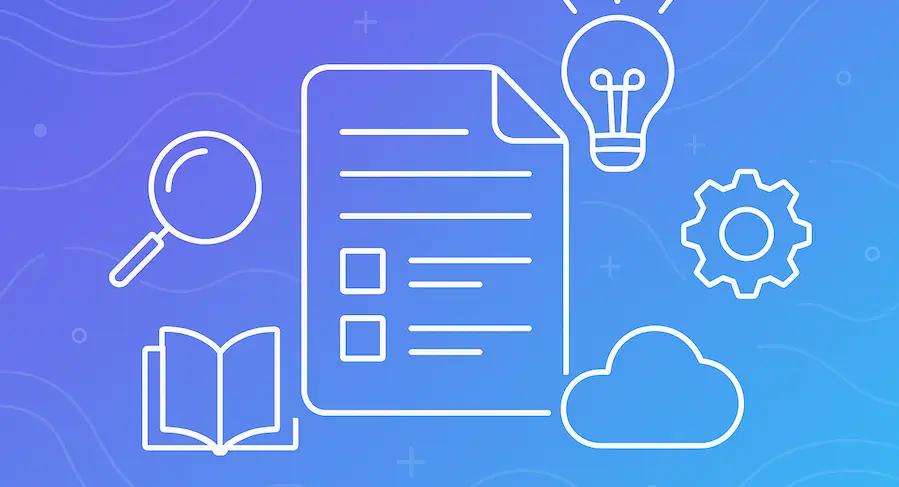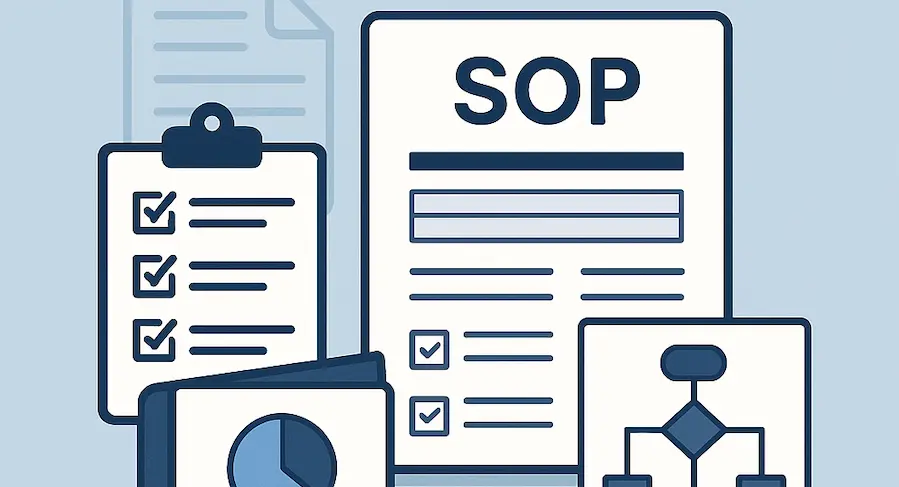
Speed, empathy, convenience… those are the top priorities your clients are looking for when contacting your call center. Yet, almost 70% of surveyed customers say most companies need to step up with their customer support game.
One of the top reasons customer service agents take longer to finish their calls is the lack of an adequate call center knowledge base. If information isn't available instantly, the result is longer hold times and dissatisfied customers.
Find out how to streamline customer service operations with a great call center knowledge base.
What is a call center knowledge base?
A knowledge base is a centralized repository of all your call center data. It should include accurate and reliable information in the form of anything from FAQs and how-to guides to training manuals and SOPs.
We're way past the age where a call center knowledge management system was kept in bulky folders and paper stacks. Efficient call centers need an easily searchable cloud-based knowledge base and modern software to create it swiftly.

How to create a call center knowledge base
Below, we've provided an actionable guide on how to build a knowledge base for all your customer service operations. Follow each step and watch your company grow.
Decide what your call center knowledge base will include
The key components that a call center knowledge base should include are:
- Customer service best practices and policies: Include guidelines on tone and style and procedures for handling sensitive matters and demanding clients. Feel free to add real-life scenarios to illustrate exactly what you expect.
- Product and service information: Include detailed descriptions and specifications, common troubleshooting steps and make sure to update whenever changes are made.
- Conflict resolution: Include step-by-step guides for conflict resolution and strategies for de-escalating conflicts with examples.
- FAQs: This empowers agents to always give quick, accurate answers to the most frequently asked questions. Encourage employees to contribute to the FAQ based on their experiences with clients.
- Resources and references: Provide agents with quick access to additional resources to help them perform to the best of their abilities. Include links to external industry resources, internal references to manuals and contact information for relevant support teams within the company.

Use process documentation software
Building a knowledge base manually is pointless – after all, it's supposed to save you time, not add more to your workload. It would take hours to document each process individually and take and annotate screenshots of everything. Luckily, we have a solution for that: a knowledge base software that automates much of the work that goes into drafting SOPs.
MagicHow is a practical tool you can use as a call center knowledge base software. It can streamline operations in your contact center by helping you create stylish, informative documentation of any digital process. What's best is that you don't need any technical knowledge or experience to use it. The friendly UI is intuitive enough that you'll create your first tutorial for call center agents in minutes.
https://www.youtube.com/watch?v=9Z2QALFQofs&ab_channel=MagicHow
With this process documentation software, you can create beautiful and transparent guides in five easy steps:
- Install MagicHow with a free browser extension here or a desktop version here.
- Press record and start the process you want to document.

- Perform it as usual while MagicHow makes screenshots and automatically breaks the process down into small, logical steps.
- Customize the finished instructions by:some text
- Blurring data
- Cropping pictures
- Adding branding
- Changing colors and fonts
- Merging, replacing or deleting slides
- Adding titles and descriptions

5. Share your finished, illustrated knowledge-base articles any way you like. With MagicHow, you can do it easily by:
- Exporting it to a PDF file
- Configuring the access settings
- Copying the guide as HTML or Markdown to embed it on any website
- Posting it in Notion, Confluence, Zendesk, Webflow etc.

Here are some practical use cases to illustrate where MagicHow can be helpful:
- Provide customer service guides on how to use a CRM system
- Explain how your help desk or live chat works with screenshots
- Show your customer support agents how to track support tickets
- Empower your team to teach customers how to troubleshoot with the guides you've created
But its use is not limited to customer support. You can also standardize processes for other industries by creating:
- All types of employee training manuals
- Instructions for salesmen
- HR SOPs etc.
The best thing is, once you record a process, you never have to explain it again. We know how frustrating it gets to have to repeat yourself over and over.
Automate wherever possible
Automation helps workers save an average of 3.6 hours weekly. Using an SOP software for drafting your knowledge-base articles is just the first step. But you can improve even more with the right knowledge base software and other intelligent tools. Some automation options include:
- Smart content classification and tagging with machine learning
- Using natural language processing algorithms for summaries and key points
- Implementing version control mechanisms that will store your files' past versions for future reference
- Using machine translation that helps make your information accessible to people from all around the world
- Integrating reporting and analytics tools for tracking your knowledge base's efficiency
- Making use of web scraping tools whenever you need to find reliable information online
Make it easy to skim
A contact center knowledge base shouldn't resemble a book. Swap lengthy paragraphs for:
- Bullet points
- Numbered lists
- Tables
- Graphs
- Images
- Videos
Once you're done, go back and reduce the word count to the minimum. Ask someone from the outside for a peer review to make sure everything is understandable in the first read. Opt for clear and straightforward content that's easy to skim and scan for keywords.
Easy navigation also means logically categorized content. Sort your FAQs, policies and processes into groups and clusters that you can expand as you go along. Use tags and keywords for each group to make searching for information a breeze.
Include a search feature
One of the knowledge base best practices is including a search feature. Your customer support agents must be able to find answers to client questions as fast as possible. Limiting their waiting time and avoiding putting them on hold improves the customer experience, which consequently positively impacts retention, according to 60% of business managers.
A search bar allows your customer support team members to quickly find relevant information by inputting a keyword. This saves precious minutes they would otherwise spend going through subcategories, tabs and article titles.

Use simple and concise language
Sticking to simple language helps customer service teams communicate clearly with anyone. It also makes it easier to train new employees without the need for lengthy glossaries and an extended onboarding time.
Make it accessible
An effective knowledge base must be easily accessible to the appropriate agents. Include a fast, one-step sign-in to the database. Prioritize the most important articles and guides and provide agents with links for easy access. Ideally, they should always have the most popular customers' query solutions open. That way, they can handle issues even faster.

Implement internal linking between your relevant knowledge base articles. It allows staff to jump between related topics without returning to your main database page.
Consider making your knowledge base (or at least parts of it) publicly accessible. A whopping 91% of customers say they'd like to use a digital knowledge base if it met their needs. 67% of respondents prefer self-service to speaking to a company representative. Have your agents direct customers to your website before hanging up. This may urge them to use the knowledge base themselves next time before calling.
Update regularly
An outdated call center knowledge base is completely useless. All your screenshots, workflows and step-by-step instructions must reflect the current procedures. Update your content with each procedure, protocol or feature change.
Another way to ensure all your articles are up to date is to gather information straight from the source. In the case of a call center knowledge base, your end users are your staff. Set up a feedback mechanism for your call center agents where they can tell you about any information gaps they come across. It can take the form of:
- A like/dislike button below each knowledge base article
- A comment section
- A rating scale
- A dedicated chat thread for pointing out errors or inaccuracies
- Monthly meetings specifically for discussing the level of usefulness of your knowledge base
Customer feedback is also particularly valuable. Have your call center agents ask a single satisfaction level question at the end of each call. Alternatively, send your customers follow-up texts or emails to gather information about what they liked and what could be improved.
Reporting tools could also come in handy. Track your call times so you can see if their length is improving or not. Analyze frequently searched terms – if no guides match the searches, create new articles for them.
Why do you need a call center knowledge base?
There are many advantages to a rich and well-structured knowledge base. Here's how it can boost call center performance:
- Reduce call times: This is probably the main benefit of a centralized call center knowledge base. Direct access to specific information drastically improves response times (and quality).
- Train new employees faster: Recent studies show that 47% of call center managers struggle with high turnover. In 2022, the industry's quitting rate reached a record high of 38%. A solid knowledge base helps counteract this in two ways. One – it accelerates the onboarding process by having all training information in one place. Two – it can help reduce resignations by making the work easier and less stressful.

- Improve customer satisfaction: When your agents can serve customers promptly, customer satisfaction levels naturally increase. Whether they're experiencing issues with a product feature, pricing plan change or subscription cancellation, they expect to resolve them quickly.
- Avoid confusion and inconsistencies: Accurate information kept in one place helps standardize your employees' responses. This removes guesswork and subjective interpretation of information by agents from the equation. No more misunderstandings or fumbling workers who could hurt your PR and brand image.
- Improve business performance: 73% of executives admit that they've noticed a direct link between their company's success and the level of customer service they provide.
- Pinpoint information gaps: A knowledge base should be the single source of true information for contact centers. When your agents talk to clients and can't find the relevant information in the database, it gives you an instant alert to add this topic to your repository.
- Lower support costs: If your agents can assist clients faster, it enables them to take on more customer calls during the day. This reduces support costs and the need to hire more staff or even set up more call centers to handle customer queries. That's particularly important in today's environment, where many experts predict a 25% increase in customer engagement with service teams.
Conclusion
Running a call center means juggling increasing call volumes, decreasing call times, improving customer satisfaction and training new agents. It's no easy feat. We know that call center executives just don't have the time to build a base of data related to all the company procedures.
That's why you need the right knowledge base software to make your business run smoothly. With MagicHow, all you have to do is perform each process from start to finish. The program screenshots and annotates steps automatically without you having to think about it. Customize it to your liking or leave it as is and add it to your contact center's data cloud.
Sign up now to start creating your ultimate call center knowledge base.


